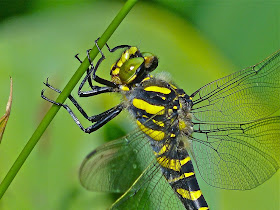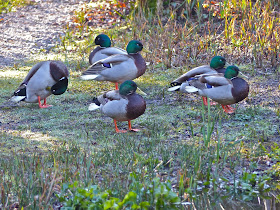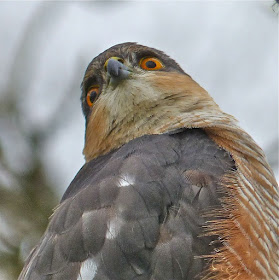 |
| a view from the office window - no wonder I never get any work done |
I’ve dreamt of being an RSPB
Reserve warden ever since being inspired by wildlife when growing up at school under the
marvellous Fenland skies around Ely Cathedral.
 |
| views that stretch beyond infinity are always going to intrigue an inquisitive child |
 |
| what a privilege it was to sing to the glory of god in such a magnificent building |
 |
| the innocence of youth - perhaps |
I won a choral scholarship to
be a chorister in this wonderful building, singing for my supper from age eight
and a half and loving it.
It was so exciting to sing
all that magical music but another equally important adventure began when
services were over. Escaping from the confines of the cathedral school there
was water and wildlife everywhere and I became passionate about finding it.
 |
| looking for wildlife included hunting for big pike |
School holidays were spent
volunteering at reserves, most notably the RSPB’s famous Minsmere where I
became a disciple to Bert Axel, the warden who pioneered the concept of
creating habitat to attract breeding birds. I even stayed with him and his wife
Joan at Christmas and New Year, hauling pit props washed up on the beach to
construct hides.
 |
| stock doves and many others enjoy the crystal clear water provided by underground springs |
First off we harnessed the
springs that rose from aquifers all around our two acre hill-top patch and then created streams that flowed through the garden.
Then we dug five ponds for
the streams to flow through before the water spills down to the River Stour.
Half the garden is classic
English woodland of oak and birch with hazel coppice. I left this largely
unchanged for years so that it could be used for making films for the
BBC, notably one about winter wildlife in Britain which proved very popular, as all UK based wildlife films did in those days.
 |
| pruning trees and shrubs is an essential and enjoyable task |
However, now I’m doing less
filming we are developing it into an ornamental woodland garden by planting
camellias, acers and lots of shade loving flowers and shrubs. It looks a real
picture in the spring and autumn.
 |
| we constructed a path through the silver birches, added tons and tons of soil and got planting |
 |
| glorious acers are a must have in any woodland garden |
 |
| the beech tree in the distance we planted twenty five years ago - it's grown rather well ... |
We diverted the stream to run
past our cottage and turned the ‘lawn’ between into a wild flower meadow, a
haven for numerous butterflies and inverts, even grasshoppers when they decide
to visit.
 |
| put your mower away and let nature take it's course - it's a win win every time |
The wild flowers that
appeared unhindered seemed like a miracle of nature because having left it to
grow naturally, among many species, southern marsh orchids started to appear,
just three the first year but now we have upwards of a hundred and fifty and
they are spreading all over, even jumping the streams and appearing in the
wood.
 |
| three species of orchid have appeared like magic and lots of other wild flowers too - it's a delight |
The woodland birches provide
plenty of feeding and nest sites and this year we were privileged to enjoy a
pair of remarkably confiding sparrow hawks that decided to raise a youngster in
the heart of the wood.
 |
| buzzards are here most days - usually strafed by crows |
 |
| impressive numbers of frogs gather to spawn in our marsh and attract hungry herons and buzzards |
We dug a shallow marsh in one
patch of woodland and forty or more frogs gather to spawn there every spring,
watched and eaten by herons and buzzards.
 |
| three pairs of mallard usually honour us with their presence and chicks every year |
Every garden should have
water as it’s a wonderful wildlife magnet and we are regularly visited by eels,
travelling here on their miraculous journey from the Sargasso Sea.
 |
| naughty otter but what an honour to have them visiting |
They are followed by otters,
a mixed blessing as we love fish too.
It’s easy to ignore the fact
that fish are wildlife too and contrary to what many wildlife trusts say, fish
are an essential part of any healthy freshwater ecosystem. For instance,
minnows spawn in our streams and provide a good meal for herons and
kingfishers.
 |
| kingfishers usually visit regularly in the summer and autumn but the 'Beast' dealt them a lethal blow this spring |
 |
| minnows thrive in all the ponds and they spawn successfully in the streams every year - food for many birds |
 |
| a bit of mowing smartens up the wilderness and allows the dragons and damsels to lay their eggs in the pond banks |
 |
| rudd and orfe love the clean water but only the red fined rudd survived the last otter visit |
In spite of several species
of native fish like rudd thriving here, the ponds and streams also provide a
haven for uncountable numbers of dragons and damsels, mayfly too and they are a
joy in the summer months.
 |
| dragonfly and human enjoying some summer sunshine |
 |
| an emperor egg laying in the shallows |
 |
| beautiful demoiselles were more common this year |
 |
| a damsel confused by a dragons tail |
 |
| the spectacular golden ringed dragonfly, Britain's biggest and a feast for a hobby |
What’s more, on one notable
occasion we were sat with a cuppa watching a beautiful golden ringed dragonfly
just a few feet from us when a hobby zoomed in and snatched it with an audible
crack. Ain’t nature wonderful.
We provide a home for several
species of bat and nightjars have sometimes come hunting over the garden as we
watch with a glass of wine at dusk.
 |
| on the lookout for bats and nightjars |
 |
| delightful foxes are a daily and nightly visitor to our patch |
 |
| colourful companions. I called the pheasant 'Prince Wilhelm the 2nd' - Sue called him 'Dinner'! |
 |
| our greedy feathered friends eat us out of house and home |
Just sitting quietly almost
always means we see something that makes us smile, even if it’s ‘only’ a family
party of long tailed tits, Sue’s favourite.
 |
| long-tailed-tits nest in or around the garden every year, much to Sue's delight |
 |
| we provided a haven of shelter and food for fieldfares fleeing the 'Beast' |
 |
| nuthatches nest in the garden so knew what side their bread was buttered |
 |
| bullfinches nest here too and love the tasty buds of blackthorn in the spring |
Up until now we’ve recorded one hundred and seven different species of birds in or over the garden so maybe my ambition of being an RSPB warden has almost been fulfilled.
 |
| even hard winters are magical in their own way and fox prints show that they appreciate this garden, snipe too |
 |
| little egrets are becoming more regular visitors each year |
 |
| sometimes the garden resembles Slimbridge - we love it! |
 |
| the sight and scent of wisteria is difficult to beat |
 |
| silver-washed fritillaries are a rare but frequent visitor every summer |
 |
| grapes ripen beautifully but the blackbirds always get there first |
 |
| clematis seem to thrive here but how much to prune is always a puzzle |
 |
| the garden buzzes with clouds of butterflies, bees and hover flies |
 |
| brimstone butterflies - a harbinger of spring |
 |
| a wafting scent of phlox |
We simply love it here and
though the garden and it’s woodland and water and insect loving flowers are a lot
of work to create and maintain, it has provided us with endless joy and as we
grow old, all we need now is to dig a couple of six-foot long holes so we can
stay and push up the daisies forever.
Sue and I do hope you are enjoying a splendid Christmas and may life be kind to you all ...
every day!
Here's hoping that you get as much joy from your garden as we do and that 'The Beast from the East' doesn't return any time soon.
The future's bright. Spring is already on the way, snow drops are pushing up fast and the days are getting longer. Summer will be back soon!






































































